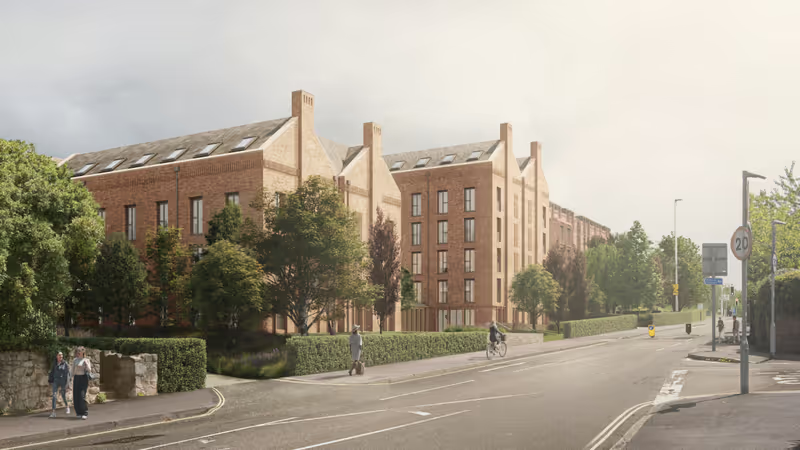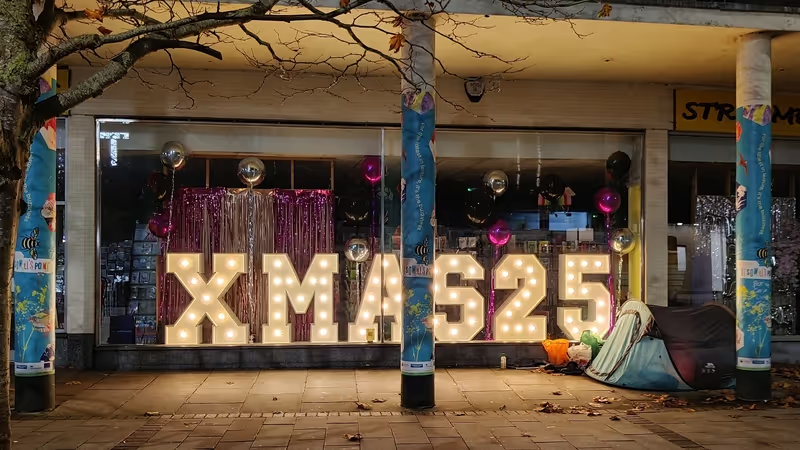Matthew MacKisack invites you to close your eyes, then to picture the Eiffel Tower. What can you see? Can you pick out the metal struts, follow the line of the tower’s elegant silhouette, grasp the way it stands proud against the Paris skyline? How vivid is the image in your mind’s eye?
An air of quiet concentration falls over the group gathered for a tour of RAMM’s Extreme Imagination exhibition. Standing back, my mind races through myriad images: memories of visits, recollections of photographs and film, Zazie playing with the laws of physics among its girders.
MacKisack interrupts my reverie. Who can see nothing at all? A few people raise their hands. It seems they have a little-known condition called aphantasia and possess no mind’s eye.
La descente vertigineuse de Charles from Zazie dans le métro
This “blindness of the mind” is not new: it was first described in the late 19th century. Following decades of disinterest, study of the phenomenon was revived in 2005 by the University of Exeter’s Professor Adam Zeman, and has identified wide variations in imaginative ability.
New terms are now in use: aphantasia affects around two or three of every hundred people. Hyperphantasia, at the other end of the imaginative spectrum, is found in around 10 to 15 percent of the population. My manic internal Eiffel Tower memory movie appears to place me firmly in this latter group.
Studies of the neural basis of visual imagination and its role in culture have now taken place - and provided the basis for this exhibition.
Curated by MacKisack and artist Susan Aldworth, Extreme Imagination surveys a selection of aphantasic artists, writers and makers. The work on display is varied and visually engaging but not, at first glance, distinct from what one might see at any other gallery or exhibition.
It was only as MacKisack steered us to specific pieces and relayed insights into their production processes that more intriguing questions arose.
He told us people with aphantasia often report they can’t picture family members when away from them. Or can remember a holiday but are unable to conjure up specific scenes from it.
So how might such a person, with little or no internal visual vision, approach producing creative work?
 Extreme Imagination exhibition at RAMM
Extreme Imagination exhibition at RAMM
We are invited to consider a small, monochromatic oil on canvas by Dutch painter Daan Tweehuysen that beautifully renders a photoreal chunk of shrivelled ginger.
Tweehuysen, MacKisack tells us, has developed production strategies that include copying from life or photographic images.
There’s nothing unusual about the use of this technique in visual art, except that for Tweehuysen it is his only technique: he is constrained to observation alone.
Photographic sources also supply the basis for creative work by illustrator Stephanie Brown who says that, instead of relying on visual imagination, she methodically works through whatever the production of a particular image requires.
The Fall of a King was created to accurately illustrate a specific scene from a supplied narrative. Depicting foxes in a graveyard at sunset, she employs insight into the way the brain processes colour to combine warm colours with cool yellow to create the illusion of vibrant green for a grassy foreground.
Instead of relying on an image of sunset in her mind’s eye, she uses photographs to work out which colour tones are required.
In contrast with this methodical approach, Michael Chance instead relies on improvisation that emerges as he works, using the canvas to develop his ideas instead of his imagination.
His painting Bacchus Walk depicts dozens of bodies in different degrees of undress, limbs variously entwined, in a surreal scene in which the different scales at which they appear deny the normal rules of physical reality.
He describes his technique as stepping out into the unknown, where the work of painting or drawing becomes a process of visualisation. He bypasses conscious decision-making to allow images to emerge externally, rather than trying to realise inner vision.
Susan Baquie also makes work without an outcome in mind. She uses collage to play with materiality before contemplating the results.
In The Prahan friend’s brother #4 and The Prahan friend’s brother #5 she responds to news of a suicide, allowing her emotions to guide how she tears and places scraps of paper.
She says there were no images of the distressing events in her mind, but that a figurative representation of them seemed to emerge unintentionally in the action of making and from her subliminal awareness of the death of the young man.
 Extreme Imagination exhibition at RAMM
Extreme Imagination exhibition at RAMM
Aphantasia also affects other creative endeavours. Writer Ben Hardy concentrates on action and plot in his narratives, rather than detailed visual description, and John Brinnels pieces together his novels using descriptive materials he finds in other writers’ work.
MacKisack tells us that despite aphantasia’s apparent challenges, “creativity finds a way”.
However, Melissa English Campbell says her hyperphantasic imagination is the basis for her creativity.
She can almost photographically visualise, manipulate and refine her work in her mind’s eye, spending hours composing and adjusting a piece before committing it to paper and then production. Honey, an immensely detailed linen weaving, is a typical outcome.
This impressive feat would have pleased the Romantics who, MacKisack tells us, extolled the Aristotelian notion that artists give external form to their inner thoughts.
Joshua Reynolds, the 18th century Devon-born artist, believed the painter’s purpose was to directly realise their visions. He said: “Whenever a story is related, every man forms a picture in his mind of the action and the expression of the persons employed.
“The power of representing this mental picture in canvas is what we call invention in a painter”.
Yet the work of the artists in this exhibition defies this conviction: it is inventive, expressive and powerfully representational.
Nevertheless, important questions remain. For instance, what is the role of imagination in producing contemporary conceptual work which is often focussed more on ideas than the material, despite typically resulting in the presentation of objects?
Tracey Emin says that she climbed out of her famous bed and, in hyperphantasic mode, clearly visualised it sitting in a gallery space. Did Simon Starling float a shed down the Rhine after seeing it in his mind’s eye?
 My Bed by Tracey Emin at Tate Britain. Photo: Andy Hay.
My Bed by Tracey Emin at Tate Britain. Photo: Andy Hay.
Perhaps such questions are beyond the scope of this exhibition. The work on display offers plenty to contemplate, especially when considered alongside the accounts of its production.
Having discovered my own hyperphantasic visual sense, and become more aware of its advantages, I was all the more impressed by the strategies employed by these artists.
I found myself wondering whether their aphantasia conveys advantages of its own. MacKisack concurs. “If you have it, you exploit it, and if you don’t, you develop other means”.
In any case, it is clear that we need to reconsider the way we imagine imagination itself.
Extreme Imagination: Inside the Mind’s Eye is at RAMM in Exeter until 2 June. More information about the research project can be found at its dedicated University of Exeter website.







